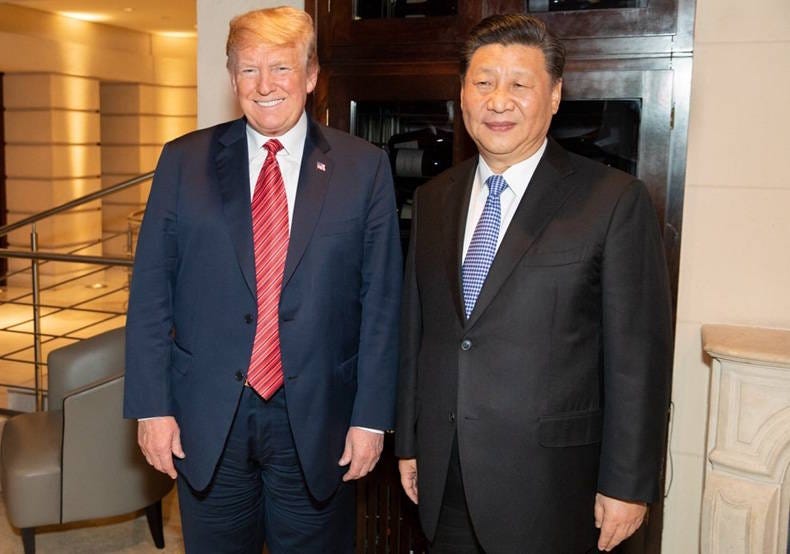
During the Biden years, I wrote a lot about U.S.-China competition. Like many other analysts, I was pretty convinced that the next decade or two would be shaped by geostrategic, military, technological, and economic competition between these two giant nations and their respective coalitions of allies. This seemed like a reasonable assumption, because of the political actions of the people in charge of the two nations. Xi Jinping seemed dead set on having China supplant the U.S. as the world’s dominant power, while both the first Trump administration and the Biden administration made competition with China a primary policy goal. Export controls, tariffs, industrial policy, and most other economic policy innovations in the U.S. all seemed oriented around the same goal: competing with China.
Most of the structural preconditions for a Cold War style confrontation seemed in place — territorial flashpoints, intractable ideological and institutional differences, competing tech ecosystems. Opinions of China in the U.S. and elsewhere plunged around 2019, adding fuel to the fire. The Ukraine war increasingly felt like a proxy war between China and NATO. On top of all that, we had the Second China Shock, as China’s post-pandemic industrial policy flooded the world with cheap goods and threatened manufacturers in every other country.
When Trump returned to power, many people predicted that the competition between the two countries would intensify. But I was suspicious of that narrative. Trump had already come out against the TikTok divestment bill, and denounced the Biden-era industrial policies that were giving the U.S. a chance of competing with China in strategic industries like semiconductors and EVs. Furthermore, prominent China hawks like Matt Pottinger seemed to have been purged from the Trump orbit.
The simplest explanation, in my view, was that Trump had simply chosen to change America’s alignment to a neutral, isolationist stance. He seemed to want to revive Charles Lindbergh’s idea of dividing the world into regional spheres of influence, ceding influence in Asia to China and influence in Europe to Russia.
After 7 months of the Trump presidency, however, I’m starting to gravitate toward a different theory. It now seems to me that the U.S. and China have simply mutually decided to pause their incipient rivalry in order to focus on domestic issues. In America’s case, this manifests as a combination of popular exhaustion and elite distraction; China, meanwhile, seems to be focusing more on its economic problems.
America isn’t even trying anymore
Click this link for the original source of this article.
Author: Noah Smith
This content is courtesy of, and owned and copyrighted by, https://noahpinion.substack.com and its author. This content is made available by use of the public RSS feed offered by the host site and is used for educational purposes only. If you are the author or represent the host site and would like this content removed now and in the future, please contact USSANews.com using the email address in the Contact page found in the website menu.







